Spiritual Enrichment
Tibet is a renowned spiritual center, attracting scholars from around the world due to its deep-rooted Buddhism practices and traditions. Spiritual enrichment in Tibet is not just an activity; it's an integral part of everyday life, deeply woven into the fabric of its culture and the psyche of its people. Here are a few aspects that make Tibet a unique destination for spiritual enrichment:
-
Monastic Life: Tibet is home to several ancient monasteries like Sera, Drepung, and Ganden, where visitors can observe monastic debates, meditation sessions, and religious teachings. These monasteries are active centers of Buddhist learning and practice, offering a glimpse into the disciplined, devoted lifestyle of the monks and nuns.
-
Pilgrimage Sites: The region is dotted with numerous sacred sites such as Mount Kailash, considered a holy pilgrimage site by multiple religions including Buddhism, Hinduism, Jainism, and Bon. Pilgrims undertake arduous journeys to circle the base of the mountain, a ritual believed to bring spiritual cleansing and merit.
-
Meditation Retreats: For those looking to delve deeper into their spiritual practice, Tibet offers meditation retreats often located in remote areas. These retreats provide an opportunity to meditate in serene and powerful environments, enhancing personal growth and self-reflection.
-
Teachings and Festivals: Participating in local religious festivals and receiving teachings from Tibetan lamas can provide profound insights into Buddhist philosophy and its application to daily life. Festivals such as Monlam also offer the chance to see large-scale religious gatherings, prayer sessions, and ritual dances.
-
Symbolic Art and Architecture: Tibetan art and architecture have spiritual symbolism. Visiting places like the Potala Palace and exploring thangka paintings, mandalas, and statues offers aesthetic pleasure and lessons in Buddhist teachings and cosmology.
Engaging with these spiritual practices and experiences in Tibet can provide a transformative journey for those seeking peace, wisdom, and a deeper understanding of themselves and their world.
Here is our 8 days Itinerary to explore Tibet with us. Tibet Cultural Tour
Mount Everest's Tibetan Side
Mount Everest, known as Chomolungma in Tibetan, is a pinnacle of awe-inspiring majesty and one of the most sought-after destinations for climbers and trekkers from around the globe. The northern face of Everest, accessible from Tibet, offers a distinct and compelling experience compared to its more frequented southern counterpart in Nepal. Here's why the Tibetan side of Mount Everest is particularly remarkable:
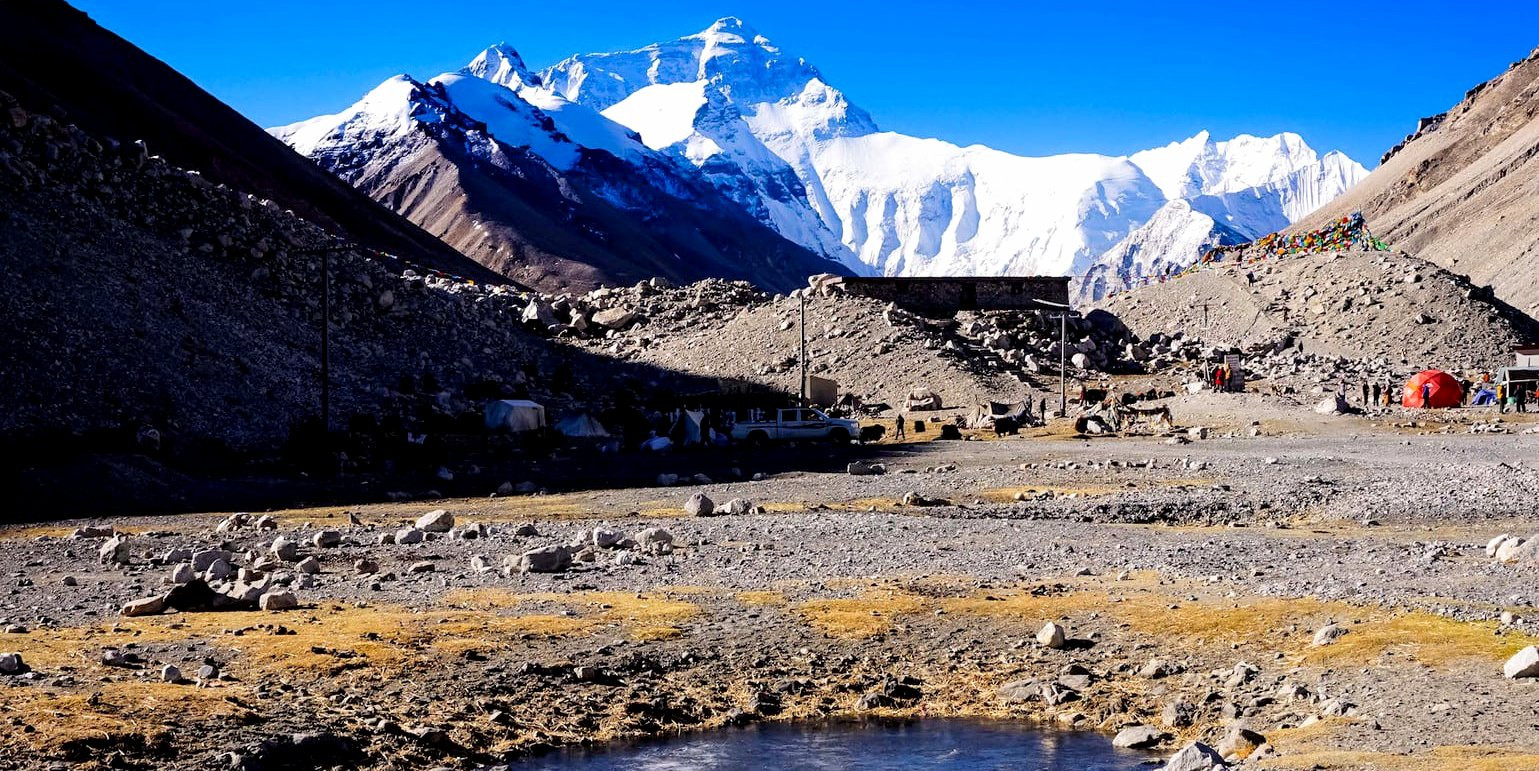
-
Less Crowded: The Tibetan side of Everest tends to be less crowded than the Nepalese side. This means more serene surroundings and a less commercialized experience for those visiting Base Camp or attempting the climb.
-
Rongbuk Monastery: Near the base of the mountain lies Rongbuk Monastery, the highest monastery in the world, which offers a unique spiritual dimension to the journey. Visitors can explore this site and possibly interact with resident monks, adding a cultural and spiritual enrichment to their adventure.
-
Advanced Base Camp (ABC): For the more adventurous, there’s the opportunity to trek to the Advanced Base Camp, which is higher and more challenging to reach than the base camps used on the Nepalese side. This trek offers stunning views of the north face’s sheer verticals and stark beauty.
-
Historical Significance: The north face was the route used by the first British expeditions in the early 20th century. Thus, trekking or climbing this side offers a sense of historical connection to the early days of Everest exploration.
-
Accessibility and Infrastructure: While more remote, the Tibetan side is well-facilitated with a paved road leading to Base Camp. This makes it more accessible to those who may not be able to trek for days, allowing more people to experience the base of the world’s tallest mountain.
-
Photographic Opportunities: The north face of Everest provides dramatic vistas that are distinct from those on the south side, offering exceptional opportunities for photography enthusiasts to capture the rugged terrain and towering height of Everest without the interference of large crowds.
Visiting Everest’s Tibetan side not only offers a quieter, more contemplative experience but also allows travelers to engage deeply with the natural environment and the historical context of Himalayan exploration. This side of Everest is ideal for those seeking a more solitary journey in the presence of the world’s highest peak.
Vibrant Festivals
Tibet's vibrant festivals are a spectacular display of cultural richness and spiritual depth, offering visitors a unique glimpse into the region's traditions and communal spirit. These festivals are deeply embedded in the Tibetan Buddhist calendar and are celebrated with a mix of religious ceremonies, traditional music, dancing, and a variety of cultural performances. Here are some of the most significant and colorful festivals in Tibet:
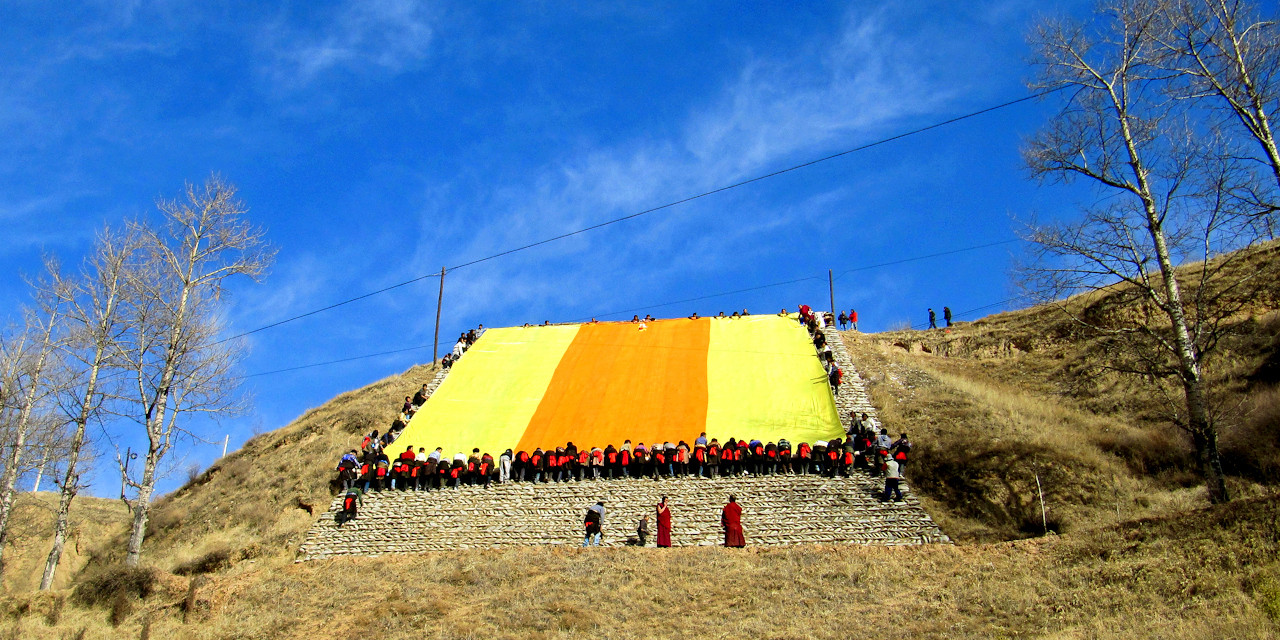
-
Losar (Tibetan New Year): This is the most important festival in Tibet, marking the beginning of the new year according to the Tibetan lunar calendar. Celebrations last for several weeks and include prayers, dances, and the hanging of new prayer flags. Families gather for meals, and homes are thoroughly cleaned to sweep away any bad fortune and make way for good luck.
-
Monlam Prayer Festival: Held in the first month of the Tibetan calendar, Monlam was originally conceived by Tsongkhapa, the founder of the Gelug school of Tibetan Buddhism, in 1409. The festival involves many days of prayers, rituals, and monk debates, culminating in the Butter Lamp Festival, where thousands of butter lamps are lit, illuminating monasteries and public areas.
-
Saga Dawa Festival: Celebrating the birth, enlightenment, and death of Buddha, Saga Dawa is one of the most religiously significant in Tibetan Buddhism. Devotees engage in meritorious actions like giving alms, freeing captive animals, and making pilgrimages to sacred sites. The most dramatic observance is the raising of the Tarboche Prayer Flagpole at Mount Kailash, a holy site for several religions.
-
Shoton Festival (Yogurt Festival): This festival begins with the dramatic unveiling of a giant thangka of the Buddha, followed by performances of Tibetan opera and picnicking at Norbulingka, the Dalai Lama's former summer palace. It originally celebrated the end of monks' Yarne, their summer-long retreat, and the lay community would offer yogurt to the monks as a symbol of appreciation.
-
Horse Racing Festivals: Held in the summer in places like Litang and Nagqu, these festivals feature horse races, yak races, and a variety of nomadic sports and cultural displays, showcasing the skill and bravery of Tibetan riders.
-
Ganden Thangka Unveiling: Held in the sixth month of the Tibetan calendar at Ganden Monastery, this festival involves the display of a giant thangka of Tsongkhapa. Pilgrims from all over Tibet come to see the thangka and receive blessings.
These festivals not only add vibrant color and joy to the daily life of Tibetans but also offer an opportunity for tourists to experience and participate in Tibet's rich cultural heritage. Each festival is a window into the soul of Tibet, providing insights into the community values, religious practices, and artistic expressions of this unique region.
Diverse Landscapes
Tibet's landscapes are as diverse as they are breathtaking, spanning several geographical and climatic zones that range from arid deserts to lush forests, and from rugged mountains to vast steppes. This incredible diversity not only makes Tibet a fascinating destination for nature lovers but also provides a rich habitat for a variety of wildlife and plant species. Here are some key aspects of Tibet’s diverse landscapes:
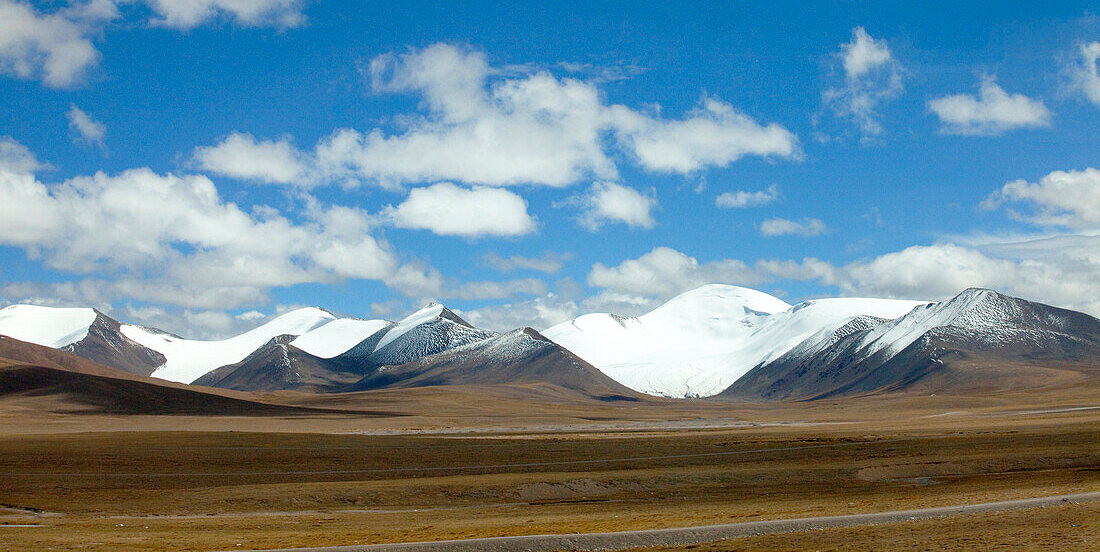
-
The Tibetan Plateau: Known as the "Roof of the World," the Tibetan Plateau is the highest and largest plateau globally, with an average elevation exceeding 4,500 meters. This vast and barren expanse is characterized by its high-altitude steppes, beautiful alpine lakes, and the unique phenomenon of permafrost.
-
Mountain Ranges: Tibet is surrounded by some of the world's highest mountain ranges, including the Himalayas to the south, the Karakoram to the west, and the Kunlun Mountains to the north. These ranges are not only famous for their panoramic vistas and challenging treks but also for being the source of several of Asia’s major rivers.
-
Rivers and Lakes: The region is dotted with numerous pristine rivers and lakes. The Brahmaputra (Yarlung Tsangpo), Indus, and Mekong rivers originate in Tibet, carving through the plateau and creating fertile valleys and deep gorges. Meanwhile, sacred lakes like Namtso, Manasarovar, and Yamdrok Tso are renowned for their spiritual significance and stunning turquoise waters.
-
Forest Regions: Eastern Tibet transitions into lush, sub-tropical forests due to higher rainfall levels, offering a stark contrast to the arid, cold plateau. These forests are rich in biodiversity, supporting various flora and fauna that are not found elsewhere on the plateau.
-
Wildlife Sanctuaries: Despite the harsh conditions, Tibet is home to unique wildlife adapted to the high-altitude environment. The Changthang Wildlife Sanctuary, for example, is a vast area of wetlands and plains home to rare species like the Tibetan antelope, wild yak, and the elusive snow leopard.
-
Agricultural Lands: The fertile valleys of Tibet, such as those around Lhasa and Shigatse, support agriculture, where crops like barley, wheat, and various fruits and vegetables are grown. These areas often feature picturesque farming villages and traditional Tibetan architecture.
-
Glacial Terrains: Tibet hosts several glaciers, which not only provide a dramatic landscape but are also crucial sources of fresh water. Glaciers like the Khumbu Glacier on the Everest massif are critical for both their ecological value and as a draw for climbers and researchers.
The incredible variety of Tibet's landscapes offers endless opportunities for exploration and photography, and each type of terrain tells a part of the story of this vast, complex region. Whether you are trekking through its mountain passes, meditating by a serene lake, or exploring its wildlife-rich sanctuaries, Tibet promises an adventure that is both awe-inspiring and humbling.
Rich Cultural Heritage
Tibet's rich cultural heritage is a profound tapestry woven from the threads of religion, art, folklore, and ancient tradition, making it one of the most spiritually and culturally intriguing places on earth. This heritage is not only preserved in its monasteries and temples but also in the daily lives of its people, their festivals, and their art forms. Here are some of the key elements that contribute to Tibet's distinctive cultural heritage:
-
Buddhism: Tibetan Buddhism is the heart of Tibetan culture, influencing every aspect of life. This form of Buddhism, which evolved from the teachings of Indian masters and the indigenous Bon religion, is deeply mystical and filled with artful rituals, iconography, and an extensive pantheon of deities.
-
Monasteries and Temples: Spiritual sites like Potala Palace, Jokhang Temple, and Tashilhunpo Monastery are not only places of worship but also repositories of Tibetan history, culture, and art. These sites house an array of sacred texts, thangkas (Tibetan scroll paintings), and statues that are key to understanding Tibetan Buddhism.
-
Language and Literature: Tibetan language is an integral part of its culture, with its own script that was originally developed in the 7th century. Tibetan literature, largely influenced by Buddhist teachings, includes a vast array of religious texts but also epic poetry, like the epic of King Gesar, and works on medicine and astrology.
-
Art and Crafts: Tibetan art is closely linked to its religious practices and includes highly detailed thangka paintings, intricately carved wooden items, and metal work that often depict religious figures and symbols. Jewelry and crafts often incorporate symbols like the dorje (thunderbolt) and the endless knot, which have deep spiritual meanings.
-
Music and Dance: Traditional Tibetan music and dance are primarily religious in nature but also play a key role in festivals and social gatherings. Instruments such as the dungchen (long trumpets), drums, and cymbals are typically used in religious music, while folk songs and dances are performed during secular events.
-
Festivals: Tibetan festivals such as Losar (New Year), Monlam (Great Prayer Festival), and Saga Dawa (celebrating the Buddha's birth, enlightenment, and death) are vibrant and filled with music, dance, and theatrical performances, reflecting the spiritual and community-oriented nature of Tibetan society.
-
Culinary Traditions: Tibetan cuisine is uniquely adapted to its high-altitude environment, with staples such as tsampa (barley flour), butter tea, and various dumplings. These foods are not just nourishment but are part of rituals and celebrations, symbolizing Tibetan resilience and adaptability.
-
Traditional Clothing: Tibetan traditional dress, such as the chuba (a long, thick robe worn by men and women), reflects the practical needs of daily life in a cold climate, while also incorporating aesthetic elements that indicate regional, marital, or social status.
-
Philosophical and Religious Scholarship: Tibet has a long tradition of scholarly work in Buddhist philosophy and metaphysics, which is taught in monastic universities across the region. Scholars and monks from Tibet are highly respected in the global Buddhist community.
-
Architectural Style: Tibetan architecture is distinctive, designed to withstand the harsh climate while incorporating important Buddhist symbols and functions. From the layout of a monastery complex to the construction of a nomadic tent, every structure is imbued with cultural and spiritual significance.
This rich cultural heritage is not only a treasure for Tibetans but also for the global community, offering profound insights into how culture, spirituality, and environment can shape a society. Visiting Tibet offers a chance to experience and appreciate this deep cultural richness firsthand.
Historic Monasteries
Tibet is renowned for its historic monasteries that are central to the religious, cultural, and social life of the Tibetan people. These monasteries are not just places of worship but also of learning, housing many priceless artifacts, scriptures, and art. They are repositories of Tibetan Buddhist knowledge and tradition. Here are some of the most significant and historic monasteries in Tibet.
-
Potala Palace: Originally built in the 7th century by King Songtsen Gampo and later expanded in the 17th century by the 5th Dalai Lama, Potala Palace in Lhasa served as the chief residence of the Dalai Lama line until the 14th Dalai Lama fled to India. It is a monumental structure with over a thousand rooms and stands as a symbol of Tibetan Buddhism.
-
Jokhang Temple: Considered the most sacred and important temple in Tibet, Jokhang Temple in Lhasa is in the heart of the old city. Founded in the 7th century, it houses many invaluable religious artifacts and a revered statue of Sakyamuni Buddha that was brought to Tibet by the Chinese princess Wen Cheng, one of Songtsen Gampo's wives.
-
Sera Monastery: Located just outside Lhasa, Sera Monastery is one of the great three university monasteries of Tibet, founded in 1419. It is famous for its lively monk debates on matters of Buddhist doctrine. These debates are a vital learning tool and a major attraction.
-
Drepung Monastery: Founded in 1416, this monastery was once the largest in the world, with a population at its peak of around 10,000 monks. Drepung Monastery is known for its high academic level and used to serve as the residence of the Dalai Lamas before the construction of the Potala Palace.
-
Tashilhunpo Monastery: Located in Shigatse, the second-largest city in Tibet, it is the seat of the Panchen Lama, the second most important spiritual leader in Tibetan Buddhism. Founded in 1447 by one of Tsongkhapa’s disciples, the monastery is famous for its giant statues of the Future Buddha and holds a vast collection of incredible gold and bronze statues.
-
Samye Monastery: Established in the 8th century, Samye Monastery is credited as the first Buddhist monastery in Tibet. It features a unique architectural design that represents the Buddhist cosmology, a main temple symbolizing the legendary Mount Meru, surrounded by smaller temples representing continents and subcontinents.
-
Ganden Monastery: Another of the great three Gelug university monasteries, Ganden Monastery was founded in 1409 by Tsongkhapa himself, the founder of the Gelugpa sect. Located on a high ridge with dramatic views, it plays a crucial role in the studies of Buddhist philosophy and is the original seat of Gelug administrative and political power.
-
Rongbuk Monastery: Near the base of the north side of Mount Everest, it is the highest monastery in the world and provides spiritual services to climbers and trekkers in the area. It’s a site of pilgrimage due to its association with Padmasambhava (Guru Rinpoche).
These monasteries are deeply embedded in the history and spirituality of Tibet. They not only serve as centers of Buddhist worship and study but also as institutions preserving the rich cultural heritage of Tibet. Each monastery has its own unique story and architectural style, reflecting the diverse practices and teachings of Tibetan Buddhism.
Adventure Opportunities
Tibet is an adventurer's paradise, offering a plethora of opportunities for those looking to explore its rugged terrain and breathtaking landscapes. The region's unique geography makes it ideal for a variety of adventure sports and activities, each providing a thrilling and unforgettable experience. Here are some of the top adventure opportunities in Tibet:
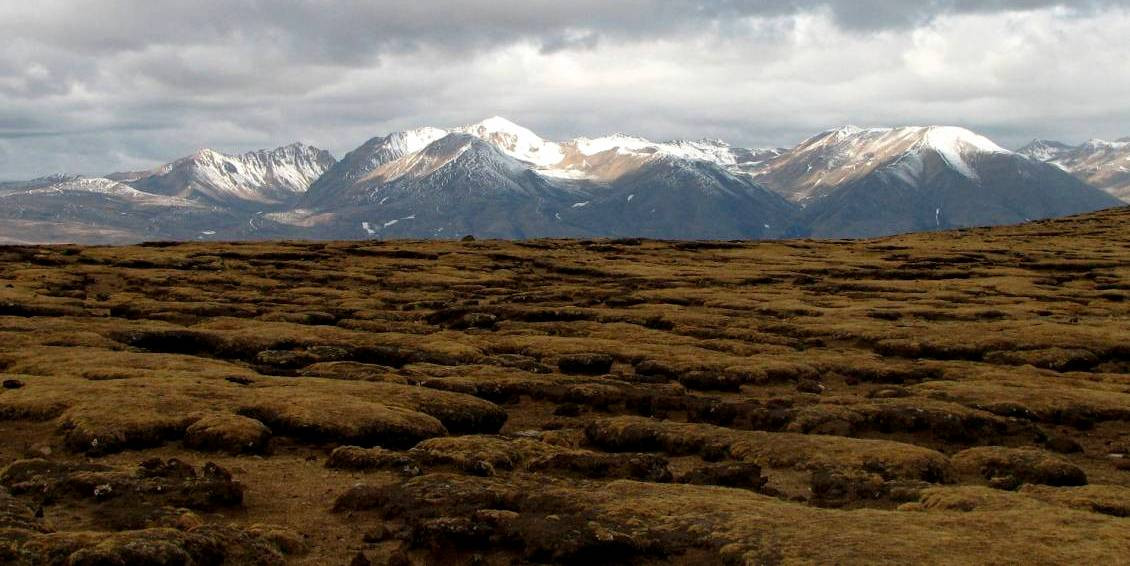
-
Trekking and Hiking: Tibet's vast and varied terrain offers some of the best trekking opportunities in the world. From the famous trek to the Everest Base Camp from the Tibetan side to the sacred circuit around Mount Kailash, there are trails for every level of fitness and experience. The treks not only challenge the body but also offer spiritual enrichment, passing through monasteries, pilgrimage sites, and stunning natural landscapes.
-
Mountaineering: For the more ambitious adventurer, Tibet’s numerous peaks provide formidable challenges, including several of the world's highest summits like Mount Everest, Cho Oyu, and Shishapangma. These expeditions require significant preparation and acclimatization due to the high altitudes and tough conditions.
-
Mountain Biking: The rugged trails and remote roads in Tibet are perfect for mountain biking. Routes such as the one from Lhasa to Kathmandu and the circumnavigation of Namtso Lake offer not only physical challenges but also spectacular views of the Tibetan plateau.
-
River Rafting: For water sports enthusiasts, the Yarlung Tsangpo (Brahmaputra) River offers exciting white-water rafting experiences. The river’s powerful currents and rapids provide thrilling rides surrounded by dramatic canyons and pristine forests.
-
Camping: Given its remote beauty, camping is a popular activity in Tibet. It allows adventurers to fully immerse themselves in nature, whether setting up camp by serene lakes like Namtso or in the shadow of majestic peaks. Night skies in these high-altitude locations are particularly impressive, offering clear views of the Milky Way and countless stars.
-
Motorbike Tours: Riding a motorbike across the Tibetan plateau is another exhilarating way to explore this vast region. The journey from Lhasa to Everest Base Camp, for instance, takes riders through some of the most beautiful and challenging landscapes Tibet has to offer.
-
Cultural Exploration: Adventure in Tibet isn't limited to physical activities. Engaging in cultural exploration by visiting remote villages, participating in local festivals, and learning about traditional Tibetan crafts provides a deeper understanding of the region and its people.
-
Wildlife Expeditions: For wildlife enthusiasts, Tibet offers the chance to see rare species like the Tibetan antelope, the snow leopard, and the wild yak in their natural habitats. These expeditions often take place in the more remote and less traveled parts of the region, such as the Changtang Wildlife Sanctuary.
-
Photography Tours: The dramatic landscapes and vibrant culture also make Tibet a fantastic destination for photography tours. These tours focus on capturing the stunning natural beauty of the region, from its high-altitude lakes and rolling grasslands to its ancient monasteries and traditional Tibetan festivals.
-
Spiritual Retreats: Combining adventure with spirituality, many travelers participate in guided meditation or yoga retreats set in the tranquil environments of Tibetan monasteries or natural settings. These retreats offer a chance to reconnect with oneself away from the hustle and bustle of modern life.
Whether you’re looking for physical challenges, spiritual growth, or just a chance to see some of the most remote and beautiful places on Earth, Tibet offers adventure opportunities that promise both thrill and transformation.
Serene Lakes
Tibet, often referred to as the "Roof of the World," is home to some of the most serene and beautiful lakes on the planet. These high-altitude lakes are not just stunning natural wonders; they are also deeply embedded in Tibetan culture and spirituality. Here’s a closer look at some of Tibet’s most tranquil and awe-inspiring lakes:
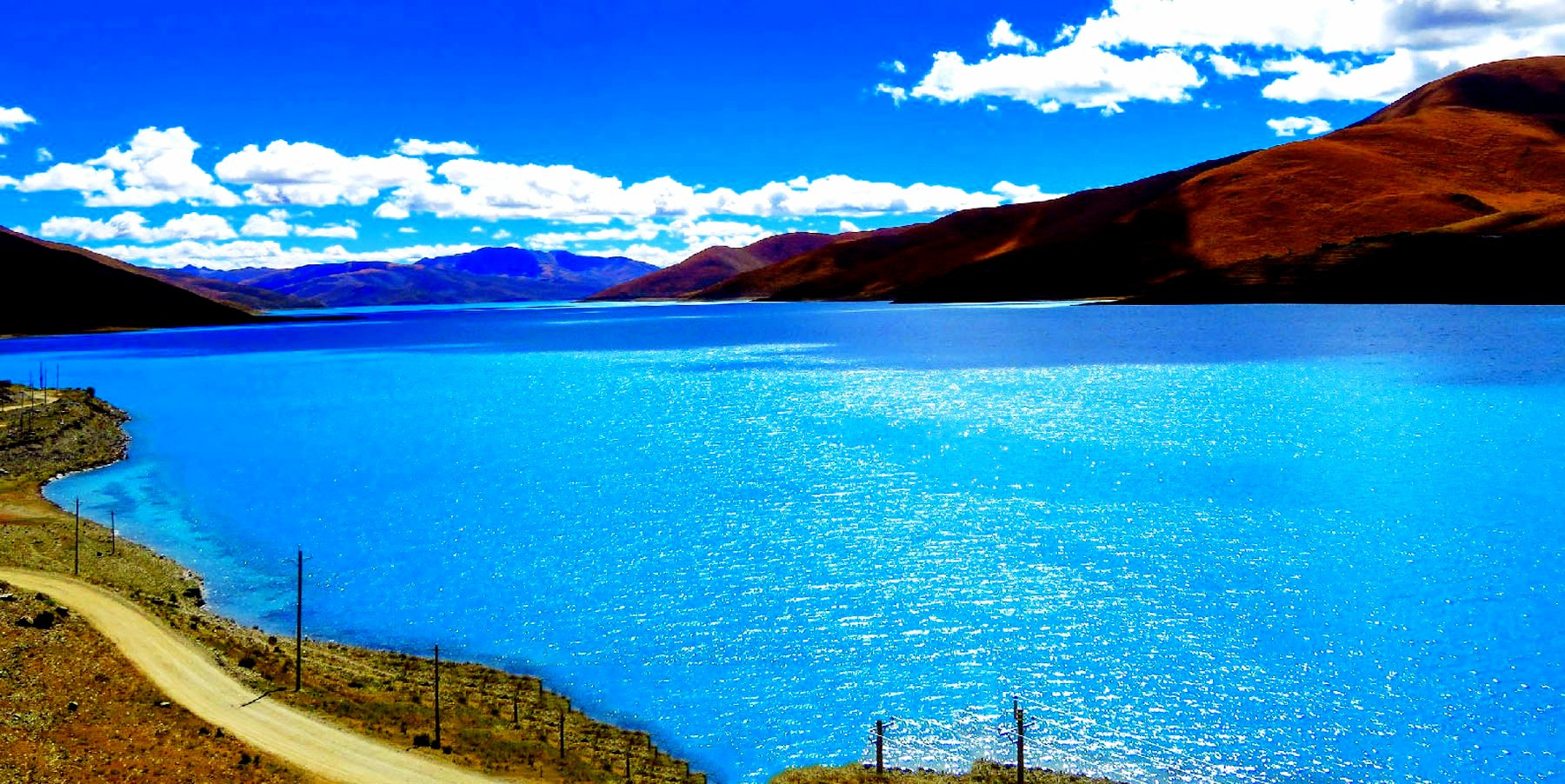
-
Lake Namtso: Known as the "Heavenly Lake," Namtso is the largest saltwater lake in Tibet and the second largest saltwater lake in China. At an elevation of about 4,718 meters, it is also one of the highest lakes in the world. The crystal-clear blue waters against the backdrop of the snow-capped Nyenchen Tanglha range create a mesmerizing scene. Namtso is considered sacred and is a site of pilgrimage, especially during the Tibetan Year of the Sheep.
-
Lake Yamdrok: One of the three holy lakes of Tibet, Yamdrok Lake is famed for its deep turquoise-blue waters and the spectacular mountain scenery that surrounds it. According to local belief, the lake is the transformation of a goddess, adding a mystical allure to its natural beauty. The lake is a vital breeding ground for large flocks of birds and is often visited for its scenic vistas and the peaceful ambience.
-
Lake Manasarovar: Situated close to Mount Kailash, Manasarovar is the highest freshwater lake in the world. This incredibly peaceful lake holds spiritual significance for Hindus, Buddhists, Jains, and Bonpos, who all believe that bathing in or drinking the water of the lake cleanses all sins. The lake is circled by pilgrims who travel long distances to perform the ritual kora (circuit) around it.
-
Lake Pangong Tso: Although primarily in Ladakh, India, the eastern end of this long, narrow, enchanting lake extends into Tibet. It is known for its striking color changes – from deep blue to light blue to green and grey depending on the sunlight and time of day. The lake lies at an altitude of about 4,350 meters and is a popular destination for its tranquil beauty and the picturesque landscape around it.
-
Lake Lhamo La-tso: Known as the "Oracle Lake," Lhamo La-tso is famous among Tibetans for its powers of prophecy. It is said that the Dalai Lama’s senior monks come here to have visions that guide them in the discovery of his reincarnation. The lake is small but situated in a spectacular setting surrounded by rugged mountains, making it a significant site for those seeking spiritual insight.
These lakes not only contribute to the breathtaking scenery of Tibet but are also central to its spiritual life, playing a role in rituals, legends, and pilgrimages. Visiting these serene waters provides a peaceful retreat and a deeper appreciation of the natural and cultural richness of Tibet. Whether you are seeking spiritual solace or just want to bask in their stunning beauty, the lakes of Tibet offer a truly tranquil and uplifting experience.
Unique Cuisine
Tibet's cuisine is a fascinating aspect of its cultural heritage, deeply influenced by its high altitude, harsh climate, and Buddhist culture, which dictates a mostly vegetarian diet for many of its followers. However, the traditional Tibetan diet includes a lot of meat due to the scarcity of vegetables in the region. Here’s an exploration of some unique aspects of Tibetan cuisine:
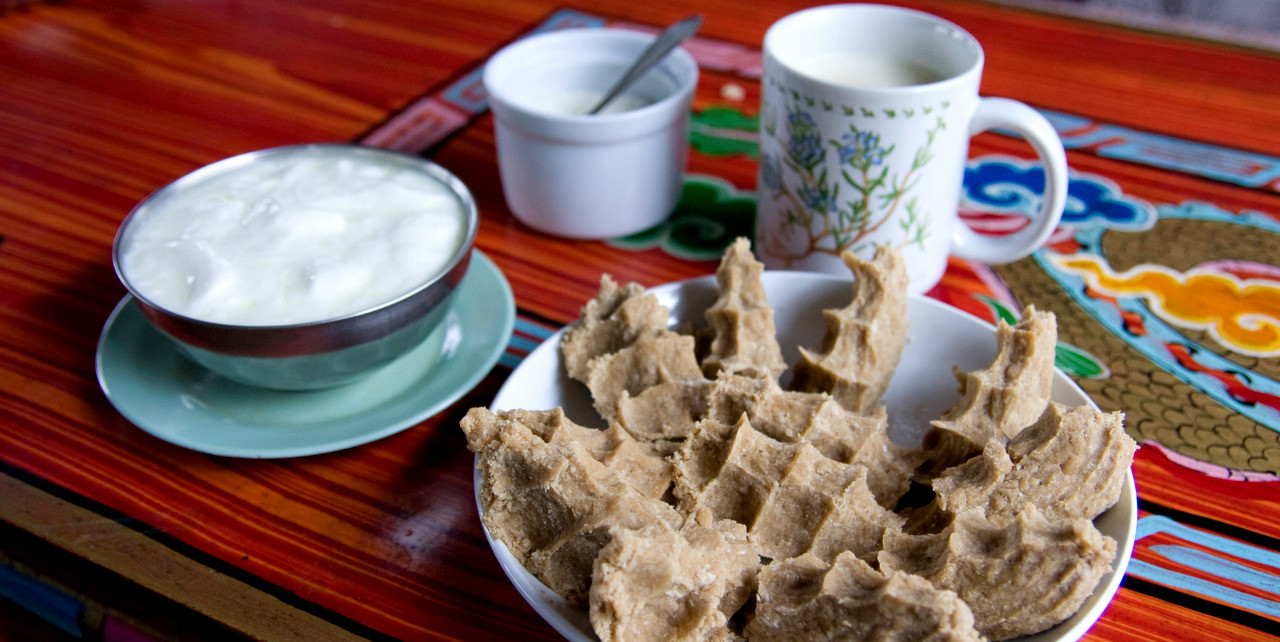
-
Tsampa: This is perhaps the most quintessential Tibetan food. Tsampa is roasted barley flour and is considered the national dish of Tibet. It is versatile and can be consumed daily. Tsampa is often mixed with Tibetan butter tea to form a doughy paste that is eaten by hand, providing high energy and nutrition suitable for the cold climate.
-
Butter Tea: Also known as Po Cha, butter tea is a staple in Tibetan diets and is made from churning tea, salt, and yak butter. The drink is beloved in Tibet for its qualities of warmth and high caloric content, making it ideal for high-altitude sustenance. It’s typically consumed in large quantities by Tibetans, often serving as a warming, nourishing drink that helps to avoid chapped lips and provide energy.
-
Yak Meat: Being a staple, yak meat is consumed in various forms—dried, ground, or as steaks and sausages. Yak meat is high in protein and more sustainable within the Tibetan plateau, where yaks are well-adapted to the high altitude and cold.
-
Momos: Tibetan momos are dumplings that are a popular snack in Tibet and among Tibetan communities across the world. They are typically filled with meat or vegetables and are either steamed or fried. Momos are often served with a spicy tomato-based sauce and are a must-try for anyone visiting the region.
-
Thukpa: A Tibetan noodle soup, thukpa is made with meat or vegetables, noodles, and a savory broth. It’s a comforting dish especially popular in the cold weather and provides a filling, nutritious meal that can be found in nearly every restaurant and household in Tibet.
-
Chang (Barley Beer): Chang is a traditional Tibetan alcoholic beverage made from barley. It is a mild, slightly sweet brew consumed commonly across Tibet. Chang plays a social role, often being brewed domestically and shared among guests and during festivities.
-
Dried Cheese: Known as chhurpi, dried cheese made from yak milk is another common food item. It’s hard and chewy and often sucked on like candy throughout the day, providing sustained energy release.
-
Tibetan Sausages: These are another popular food, made from yak or sheep meat and mixed with spices and other ingredients like rice or barley. Sausages can be dried or smoked and are typically consumed during the colder months for their high fat and protein content.
Tibetan cuisine is distinctive not just for its ingredients but also for its preparation and significance to daily life. Eating in Tibet is not just about sustenance but is deeply integrated with the region’s rituals, festivals, and daily practices, reflecting the Tibetan ethos of simplicity and adaptation to the environment.
Untouched Beauty
Tibet, often referred to as the "roof of the world," stands as a land of untouched beauty, with vast, unspoiled landscapes that have captivated the hearts of travelers for centuries. The region's remoteness and unique geographical setting contribute to its pristine condition, making it one of the last few sanctuaries where one can experience the raw, natural world in its most unaltered form. Here are some aspects of Tibet's untouched beauty:
-
Remote Plateaus: The Tibetan Plateau, the world's highest plateau, offers stunning vistas of rolling hills, rugged mountain peaks, and wide-open spaces that stretch seemingly endlessly. The sheer vastness and isolation of the plateau preserve its purity, giving visitors a sense of stepping into an ageless land.
-
Sacred Mountains: Tibet is surrounded by some of the highest peaks in the world, including Mount Everest on its border with Nepal. These mountains are not only awe-inspiring due to their height but also retain a spiritual significance that has kept large-scale commercial development at bay, preserving their natural beauty.
-
Pristine Lakes: The region is dotted with numerous high-altitude lakes like Namtso, Yamdrok, and Manasarovar, whose tranquil turquoise waters reflect the unspoiled skies and surrounding landscapes. These lakes are considered sacred, protecting them from overuse and helping to maintain their pristine condition.
-
Vast Grasslands: The northern plains and the eastern parts of Tibet feature expansive grasslands where nomadic herders roam with their livestock. This way of life, which has changed little over centuries, helps ensure that the landscape remains untouched by modern agricultural and industrial practices.
-
Rich Biodiversity: Despite the harsh climate, Tibet's ecosystems boast a variety of flora and fauna adapted to the high altitude and cold temperatures. Rare species such as the snow leopard, Tibetan antelope, and wild yak roam freely, supported by conservation efforts and the region's isolation.
-
Minimal Industrial Impact: Tibet's economic development has been relatively minimal compared to other parts of the world, which means less pollution, fewer built environments, and more areas that remain virtually untouched by modernization.
-
Spiritual Sanctuaries: Many of Tibet's natural sites are considered holy and are destinations for pilgrimages. This spiritual significance has led to a cultural respect and reverence for the natural environment, encouraging practices that protect rather than exploit the landscape.
-
Cultural Conservation: The Tibetan people hold a deep respect for their environment, driven by Buddhist principles that emphasize harmony with nature. This cultural perspective has been critical in maintaining the integrity of the region's landscapes and ecosystems.
Tibet’s untouched beauty offers a rare glimpse into both the past and the possibility of a balanced coexistence with nature. For travelers, it presents an opportunity to experience the profound tranquility and awe-inspiring vistas of an environment that has been preserved through both geographical isolation and a strong cultural commitment to environmental stewardship.
Tibet offers an unparalleled travel experience, marked by its profound spiritual depth, rich cultural heritage, and breathtaking natural landscapes. From the serene heights of Mount Everest's quieter Tibetan side to the spiritual sanctuaries and vibrant festivals, each aspect of Tibet promises a journey that is as enriching as it is awe-inspiring. For those in search of adventure, spiritual insight, or a deep cultural connection, Tibet is not merely a destination but a transformative experience. Travel with Relax Getaways and embark on a memorable adventure that will resonate with you long after you return.
FAQs for 10 Reasons to Travel Tibet
Q: Is it safe to travel to Tibet?
A: Yes, Tibet is safe for travelers. However, it's important to follow local laws and customs, and be mindful of altitude sickness due to the high elevation.
Q: Do I need a special permit to visit Tibet?
A: Yes, all foreign travelers need a Tibet Travel Permit in addition to a Chinese visa. These permits must be arranged through a licensed tour operator like Relax Getaways.
Q: What is the best time of year to visit Tibet?
A: The best time to visit Tibet is from April to October when the weather is most favorable. The climate is cooler and drier, and it's also the time for major Tibetan festivals.
Q: What should I pack for a trip to Tibet?
A: Due to the variable weather, it is recommended to pack layers, including a warm jacket, thermal underwear, and comfortable walking shoes. Sunscreen, sunglasses, and a hat are also essential due to the strong UV rays at high altitudes.
Q: Can I visit Mount Everest's base camp in Tibet?
A: Yes, the Tibetan side of Mount Everest is accessible to tourists who wish to visit its base camp. This side is less crowded compared to the Nepalese side, offering a unique experience.
Q: How can I respect Tibetan culture during my visit?
A: Respect local customs by dressing modestly, refraining from touching statues or religious artifacts, and always walking clockwise around religious sites.
Q: What kind of food can I expect in Tibet?
A: Tibetan cuisine mainly includes barley, meat (especially yak), and dairy products. Popular dishes include momos (dumplings), tsampa (barley flour), and butter tea.
Q: Are there opportunities for adventure travel in Tibet?
A: Absolutely! Tibet offers excellent opportunities for trekking, mountaineering, and exploring remote landscapes. Relax Getaways can help arrange adventure tours tailored to different levels of ability and interest.
Q: What are some must-see cultural attractions in Tibet?
A: Must-see attractions include Potala Palace, Jokhang Temple, and the monasteries of Drepung and Sera, Namtso Lake. Don't miss witnessing a monk debate or visiting during a major festival.
Q: How do I deal with altitude sickness in Tibet?
A: To mitigate altitude sickness, acclimatize gradually if possible, stay hydrated, eat light meals, and consider talking to your doctor about altitude sickness medication before your trip.
If you are flying to Lhasa from Kathmandu or flying back to kathmandu then you might be interested for Nepal Tour
If you are looking for different kinds of Nepal Tours or Trekking Packages, feel free to contact us.







